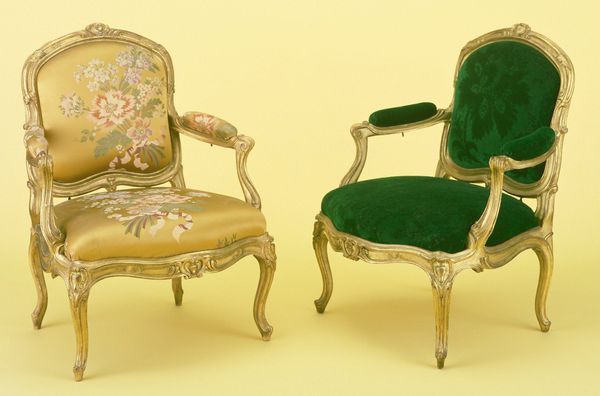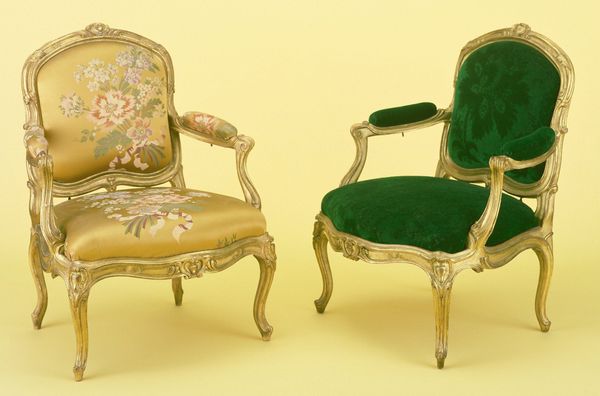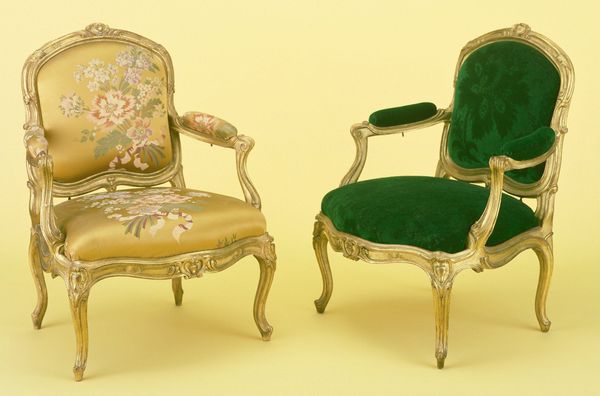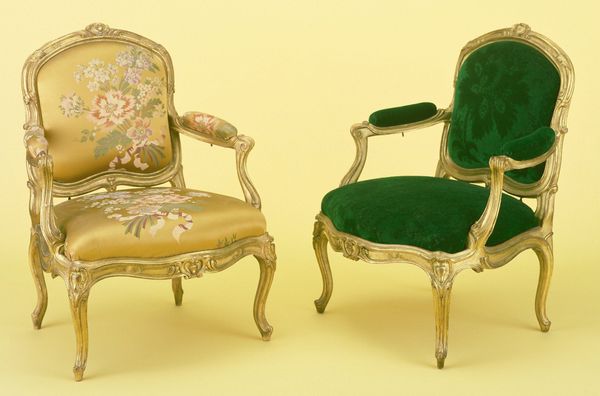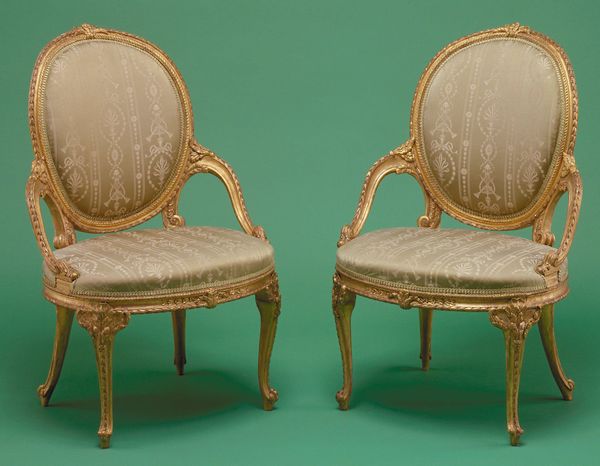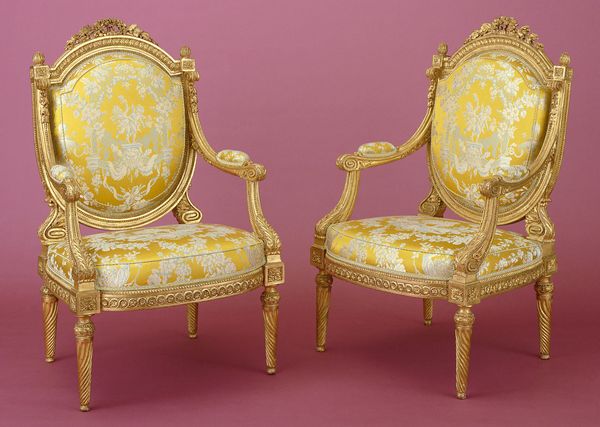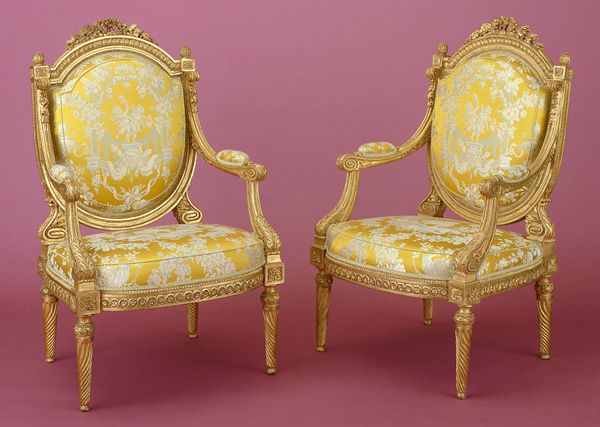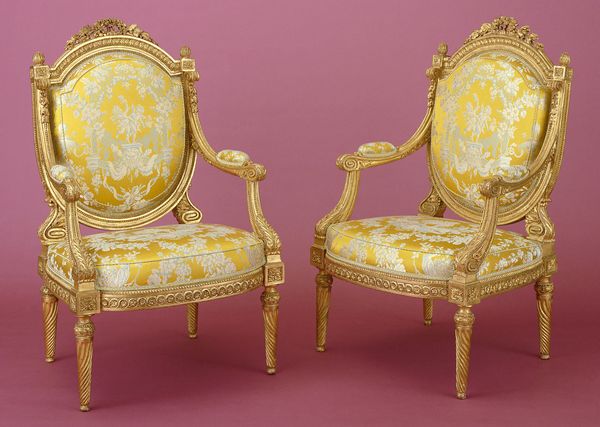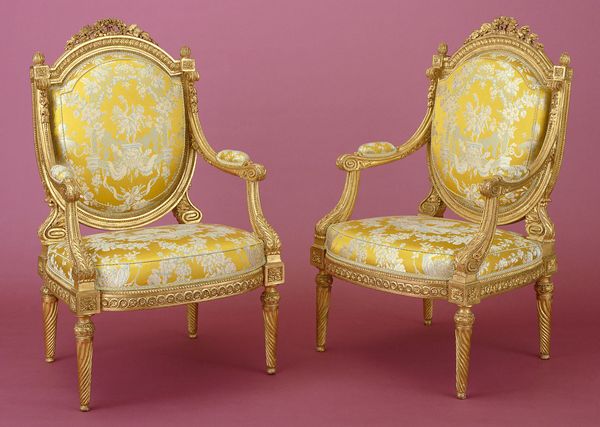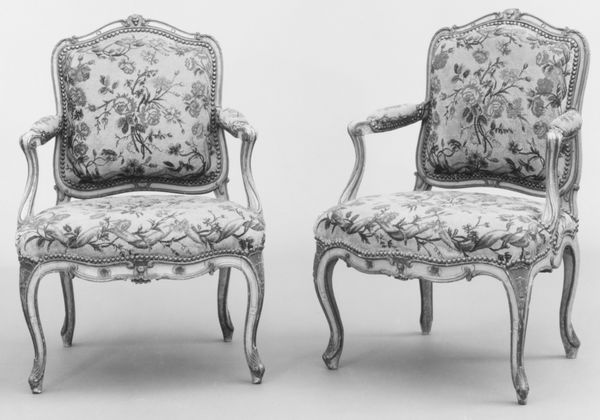
#
simple decoration style
#
decorative element
#
3d printed part
#
stylish storage
#
product displayed
#
furniture
#
decorative
#
jewelry design
#
virtual 3d design
#
3d shape
#
france
#
showhome propping
Dimensions: 38 1/2 x 27 x 24 in. (97.79 x 68.58 x 60.96 cm)
Copyright: Public Domain
Curator: Here we have a pair of armchairs, dating to around 1756. They were crafted by Jean-Baptiste Lebas, who achieved the title of Maître in that very year. Editor: Wow, they're calling out to me like forgotten royalty! I love how they are both ornate but each has such a unique presence—one feels soft, the other demands attention. Curator: Exactly! Let’s delve into that contrast. The yellow one speaks to a certain femininity prevalent in the French court of the mid-18th century, hinting at leisure and displays of wealth. The green, more austere chair projects a power dynamic, though muted. It speaks of controlled affluence. Editor: I'm feeling these vibes! Like two sisters, one adorned in springtime blossoms, while the other favors deep, emerald silks. It makes me think about societal expectations of femininity... even a chair is impacted! Curator: The choice of materials further reinforces this. The floral fabric invites associations with gardens, beauty, and nature—roles women of the court were expected to embody. Simultaneously, we mustn't overlook how these fabrics signified wealth inequality. Editor: Do you think that color contrast could signal coded ways to be—like, which rules were more advantageous or stifling depending on someone's identity and social circles? Curator: Indeed. Even something as "simple" as the choice of flowers and color opens dialogues about coded languages, performativity, gender, and power structures operating within the French court. Editor: Honestly, it is amazing to realize the chair, usually invisible as background object, could act as silent observer in an intensely mannered society! You just made me appreciate even mundane objects. Curator: And understanding the historical narratives entwined in such design brings a whole new dimension to the meaning behind them, impacting even how we view chairs today. Editor: Makes me want to redesign *my* chair as an act of liberation! Thanks for spotlighting these insights.
Comments
minneapolisinstituteofart almost 2 years ago
⋮
This armchair and seven similar examples were given to the Institute by Carolyn and Franklin Groves and The Groves Foundation as furnishings for the Grand Salon from the Hôtel Gaillard de La Bouëxière. The 1738 and 1759 inventories for the grand salon reveal that the room was predominantly furnished with nine armchairs upholstered in Gobelins tapestry with scenes of fabled animals, similar to the upholstery on view here. The armchairs will be installed in the Grand Salon following restoration of their upholstery. The sinuous C- and S-curve shapes of the chair's arms and legs, juxtaposed by shells, scrolls, and cabochon motifs, reflects a restrained version of the rococo style that was popular in France during the mid-eighteenth century.
Join the conversation
Join millions of artists and users on Artera today and experience the ultimate creative platform.
